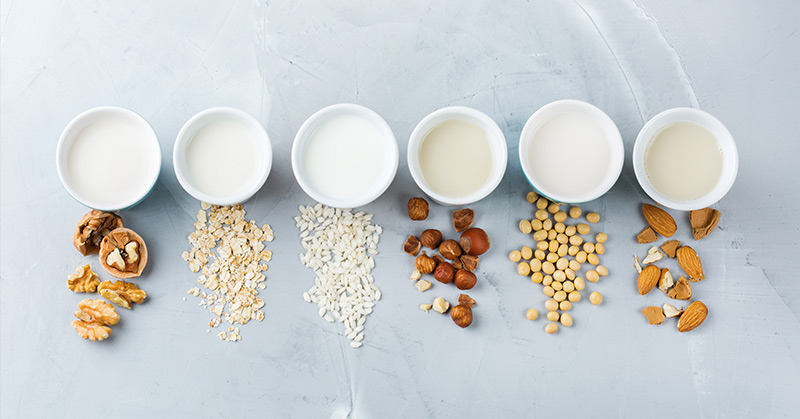So you’ve made the decision to quit drinking dairy milk. Maybe it’s because you have trouble digesting it, it bloats you or gives you gas, you find you have an acne flare-up every time you drink it, or perhaps your reasoning is environmental or ethical. Whatever your reasoning is, there is no doubt that you have made the better choice environmentally.
Environmental Impact
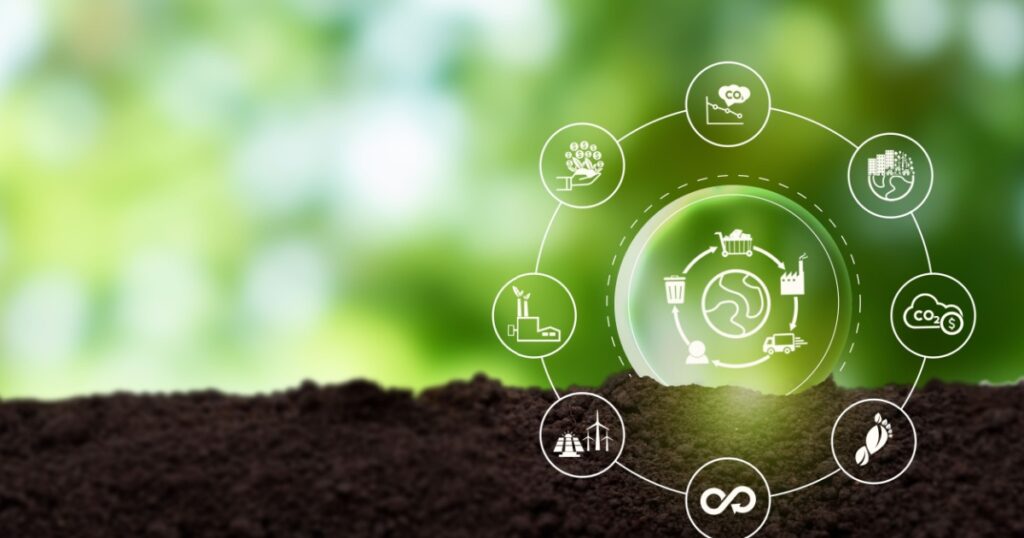
According to the World Wildlife Fund, there are approximately 270 million dairy cows worldwide, and the environmental impact of milk production varies depending on the practices used by dairy farmers and feed producers. Dairy cows produce manure, which contributes to greenhouse gas emissions and therefore climate change. When manure and fertilizers are not handled well, they can degrade local water sources, and unsustainable dairy farming can lead to the loss of ecologically important areas like prairies, wetlands, and forests [1].
In total, the dairy industry is responsible for approximately two percent of the United States’ total greenhouse gas emissions. 144 gallons of water is required to produce one gallon of milk, with more than 93 percent of that water being used to grow feed for dairy cows. Nine percent of all U.S. croplands are used to grow feed for dairy cows [2]. For these reasons, many people have chosen to replace the milk in their coffee, on their cereal, and wherever else they like to use it, for a non-dairy alternative. While this is certainly a better choice for the environment, not all dairy alternatives are created equal. Before you purchase one of these products, it is important to understand the environmental impact of each one so you can be a responsible shopper.
Read More: How to Make ‘Doritos’ That Are Delicious, Lower Calorie, and Dairy-Free
Almond Milk
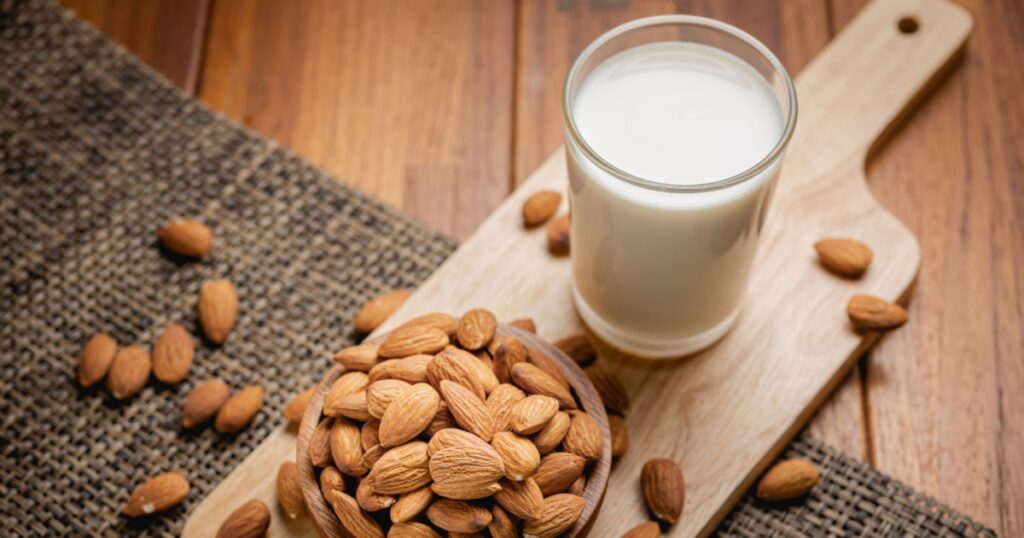
Between 2010 and 2015, almond milk grew in popularity by 250 percent. During that time, almond milk sales reached nearly nine hundred thousand dollars, while milk sales dropped by more than one billion dollars [3].
With its mild flavor, almond milk seemed like the perfect replacement. And while it is certainly less damaging to the environment when compared with dairy milk, a growing body of evidence is emerging that suggests it may not be the environmental superstar we once thought.
The first key issue with almond milk is the amount of water that is required to produce almonds. The nut is grown primarily in California’s Central Valley, which gets very little rainfall. Because of this, almond production requires the diversion of ground and surface waters from the state’s aqueduct system for irrigation [4,5].
An article in the New York Times evaluated the amount of water required for a variety of crops, and the numbers for almonds were staggering- to produce a mere sixteen almonds, you need a whopping 15.3 gallons of water [6]. California produces over two billion almonds every year, which makes the amount of water being used highly problematic [5].
This depletion of groundwater is potentially dangerous for the citizens of California. Most of the state’s almonds are grown in the San Joaquin Valley, where the ground has been sinking each year due to groundwater depletion. Farmers are building new wells to irrigate orchards, which is leaving less and less drinking water available for residents [5].
The other main issue with Almond milk is its impact on California’s bee population. The state’s almond trees rely almost exclusively on honey bees for pollination, however, the fungicides that are used to protect trees from fungal blights may be harming the crucial pollinators. A team of researchers published a study in the Journal of Economic Entomology that found that bees who were exposed to these chemicals die at two to three times the rate of unexposed bees after a ten-day period [7].
Coconut Milk
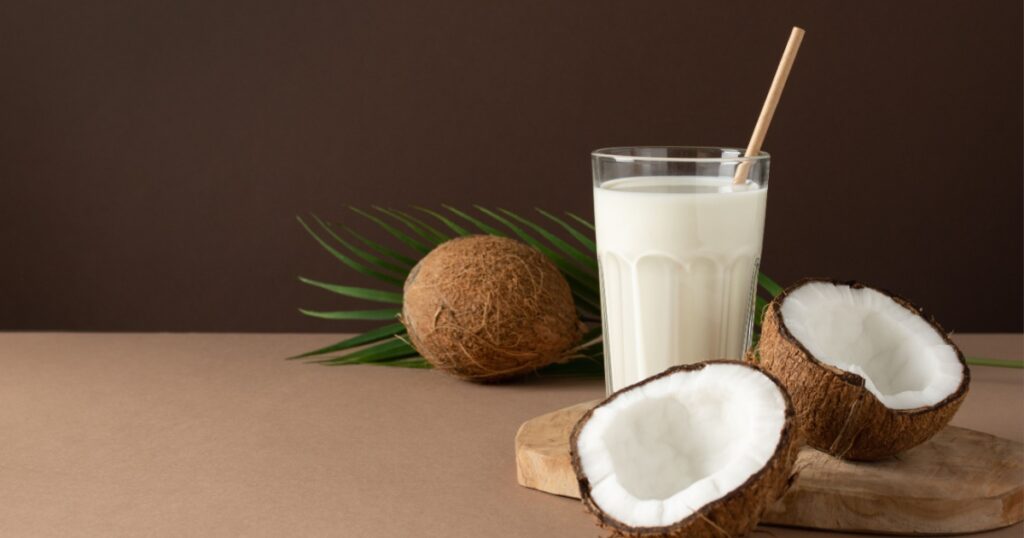
According to Isaac Emery, a food sustainability consultant, coconut milk is “an absolute tragedy”. Coconuts are grown in places like the Philippines, Indonesia, and India, and the people who are employed to pick the fruit are often paid less than one dollar per day.
“I love cooking with coconut milk but I don’t feel good about buying coconut products. Farmers in Indonesia should be growing food to feed their families instead of meeting international demands,” says Emery [4].
It is also important to remember that unless you live in an area that grows coconuts, there is going to be an environmental cost involved with getting coconut products to you. Food transportation is becoming one of the fastest-growing sources of greenhouse gas emissions, and so it is important to consider how far your food has to travel to get to you before you purchase products [8]. Nutritional profile aside, this is something to think about.
Rice Milk
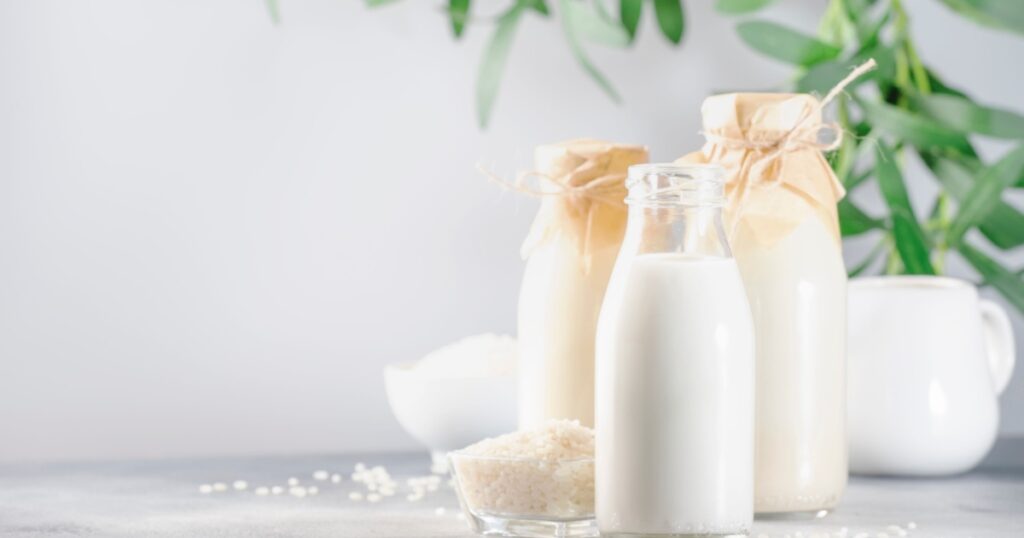
Rice milk is inexpensive and widely available, but like almonds, it requires immense amounts of water to produce. And while the amount of greenhouse gas produced through the production of rice milk is still significantly lower than that of dairy milk, it is the highest out of all the milk alternatives [9].
The higher amount of emissions from rice milk comes from the bacteria that are breeding in rice paddies, which produce methane gas. Rice also requires a large amount of fertilizer that pollutes waterways [4].
Hazelnut Milk
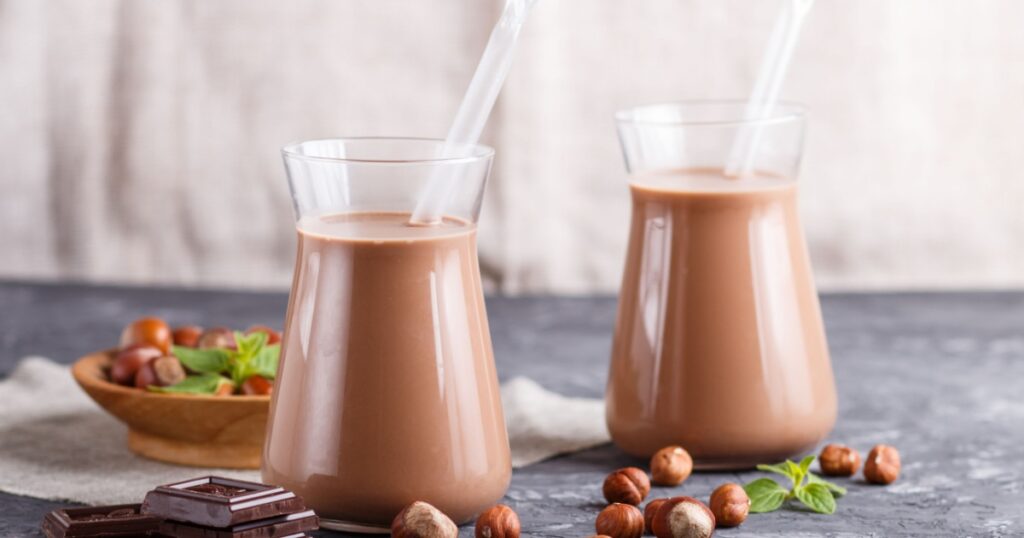
Hazelnut milk has a number of things going for it: it’s nutritious like almond milk but hazelnuts are pollinated by the wind and so do not need commercial honey bees. They also grow in moist climates where water is more abundant, and like all nuts, since they grow on trees they reduce greenhouse gas emissions by pulling carbon from the atmosphere [4].
Hazelnut orchards live for approximately 35 to fifty years or more, which helps to maintain soils because they do not require frequent tillage, they can be grown on sloping land that is unsuitable for annual crops, and require fewer chemical inputs than most other fruits and vegetables [10].
Hemp and Flax Milk
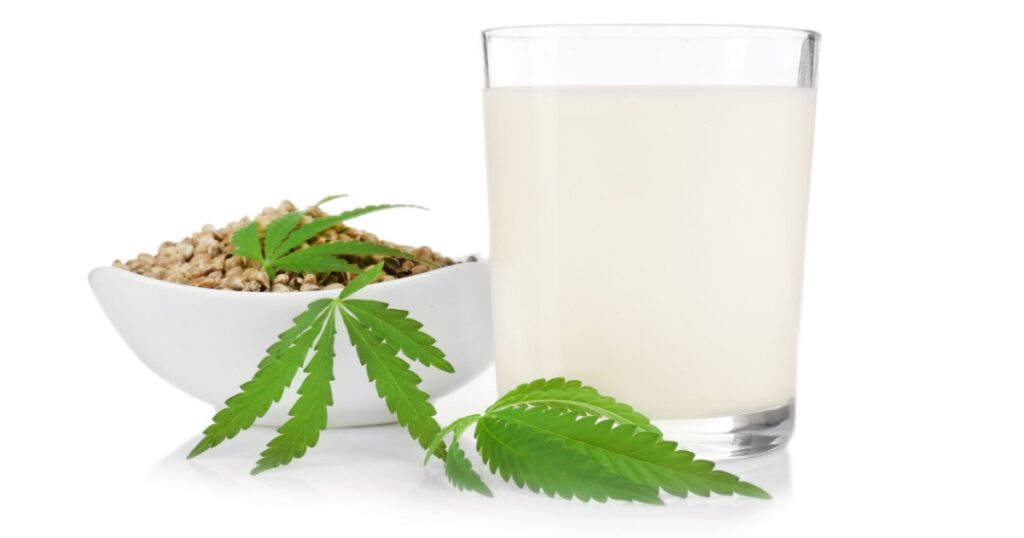
Emery describes these as “niche crops” because they are grown in relatively small quantities in the Northern Hemisphere. Their small crop sizes make them much more environmentally sustainable when compared with large monoculture crops, and milk produced from these seeds is high in both protein and healthy fats [4].
Read More: Mac & Cheese: The Best Comfort Food Recipe With No Meat or Dairy
Soy Milk
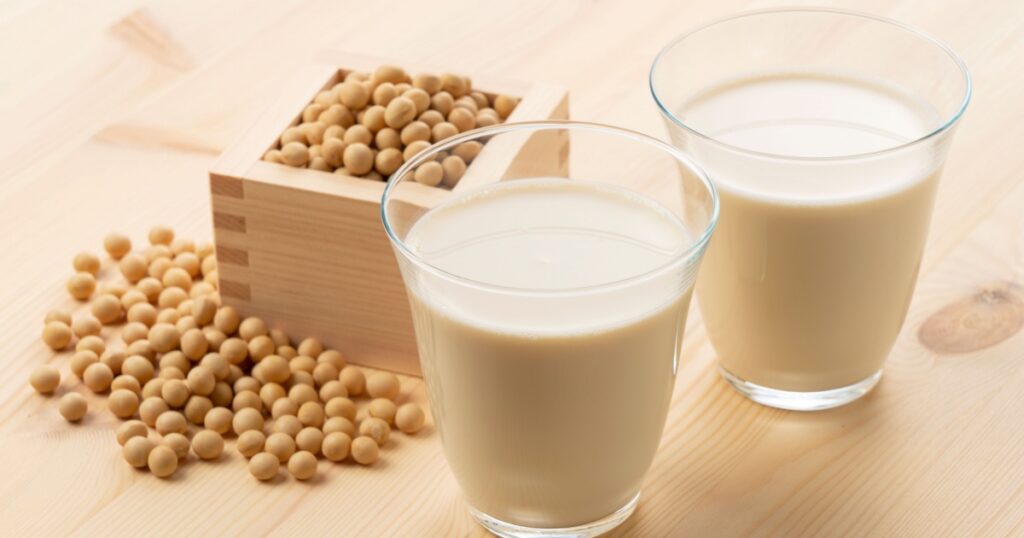
The original dairy milk alternative, soy milk fell out of consumer favor over concerns about hormone levels found in soy products. According to Emery, this is not a concern.
“The reality is you would have to consume an impossibly large amount of soy milk and tofu for that to ever be a problem,” he explained.
Soy milk is both environmentally sustainable and is the only plant-based milk alternative that contains levels of protein that are comparable to that of dairy milk. It does have one environmental drawback, which is that because they are grown in massive quantities to be used as food for livestock, large parts of the rainforest have been burned down and replaced with soy farms [4].
Additionally, soy is also a fairly common allergen, so it may not be an option for everyone [11].
Oat Milk
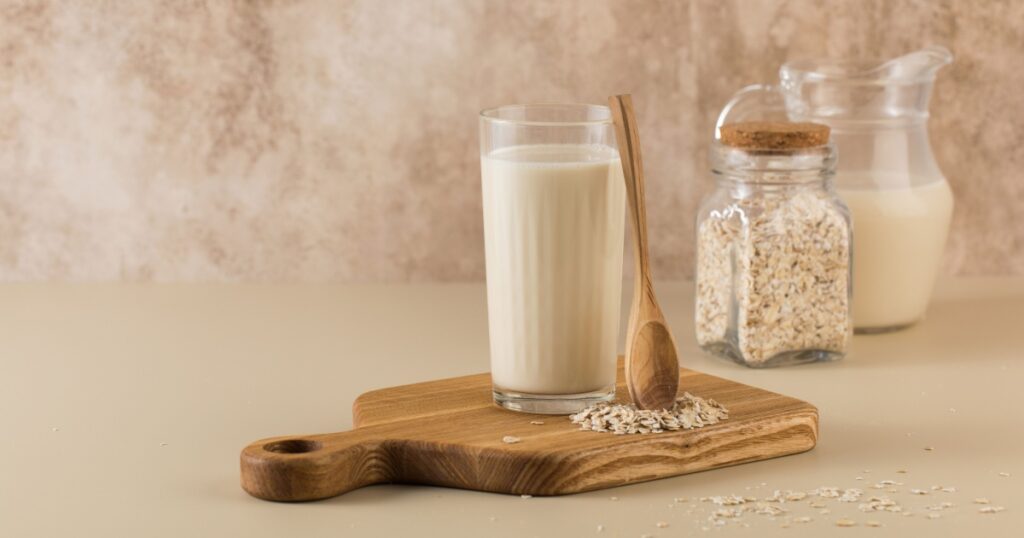
Oat milk, by all accounts, appears to be the most environmentally sustainable choice you can make. Liz Specht, associate director of science and technology for the Good Food Institute, is very excited about the rise in popularity of oat milk since it performs well in every area of sustainability, and she does not believe that there will be negative environmental impacts as the oat milk industry grows.
“Right now, 50 to 90% of global oat production goes into animal feed,” says Specht, “so there’s a huge existing acreage that we can safely steal share from without moving the needle at all on total production.” [4] Oats also do not contribute to the deforestation of developing countries, since they are grown primarily in the United States and Canada [4],
There is one drawback to oat milk, and that is its contamination with glyphosate. Most oats are mass-produced in monoculture operations where they are sprayed pre-harvest (desiccation) with Roundup, which contains the potential carcinogen. A study conducted by the Environmental Working Group found the herbicide in all but two products made with conventionally grown oats, and one-third of products made with organic oats were contaminated. The list of products they tested can be found here [12].
If you are considering switching to oat milk, the brand Oatly maintains that its products are made from oats that are certified glyphosate free [4].
The Bottom Line
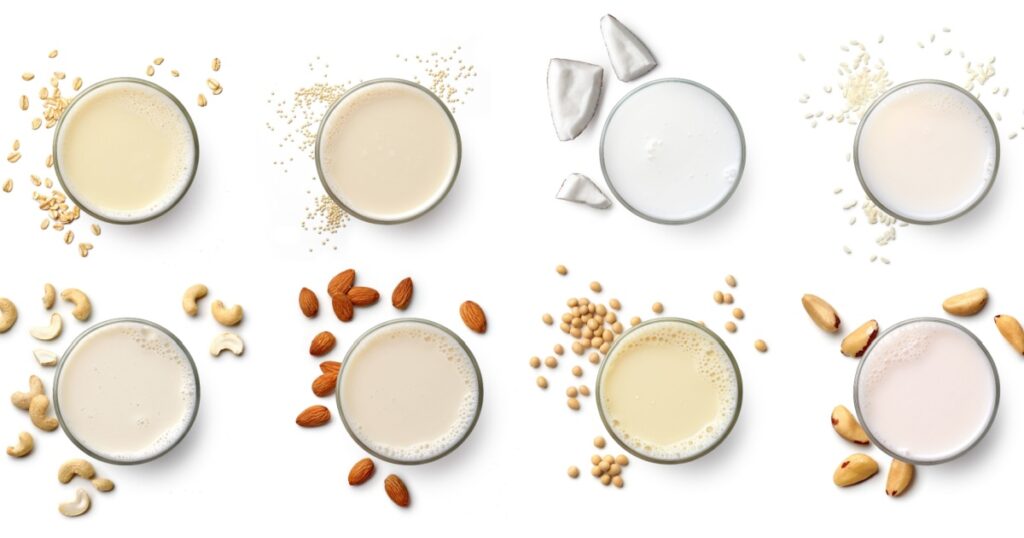
Regardless of what option you choose, you are still having a positive impact on the planet by foregoing dairy milk. When making the decision as to what products you are going to buy, it is always important that you do your research and try your best to buy from companies that are using sustainable practices.
One simple way you can lessen your impact is simply by buying a variety of different milks and choosing the more sustainable options, like hemp or oat milk, more often than the others. At the end of the day, it is important that every choice you make will have an impact on the environment, and there is no perfect option. So long as you are doing your best to make informed choices, you are helping to move the needle toward environmental sustainability.
Sources
- https://www.worldwildlife.org/industries/dairy
- https://www.worldwildlife.org/magazine/issues/winter-2019/articles/milk-s-impact-on-the-environment
- https://www.foodnavigator-usa.com/Article/2016/04/15/Almond-milk-sales-continue-to-surge-as-dairy-milk-contracts-Nielsen#
- https://www.theguardian.com/environment/2020/jan/28/what-plant-milk-should-i-drink-almond-killing-bees-aoe
- https://sustainability.ucsf.edu/1.713
- https://www.nytimes.com/interactive/2015/05/21/us/your-contribution-to-the-california-drought.html?_r=3
- https://www.popsci.com/almond-milk-could-be-bad-for-bees/#page-2
- https://www.onegreenplanet.org/environment/is-your-obsession-with-coconuts-harming-the-environment/
- https://www.bbc.com/news/science-environment-46654042
- https://www.mdpi.com/journal/sustainability/special_issues/sustainable_hazelnut_production
- https://www.mayoclinic.org/diseases-conditions/soy-allergy/symptoms-causes/syc-20377802
- https://www.ewg.org/childrenshealth/glyphosateincereal/
